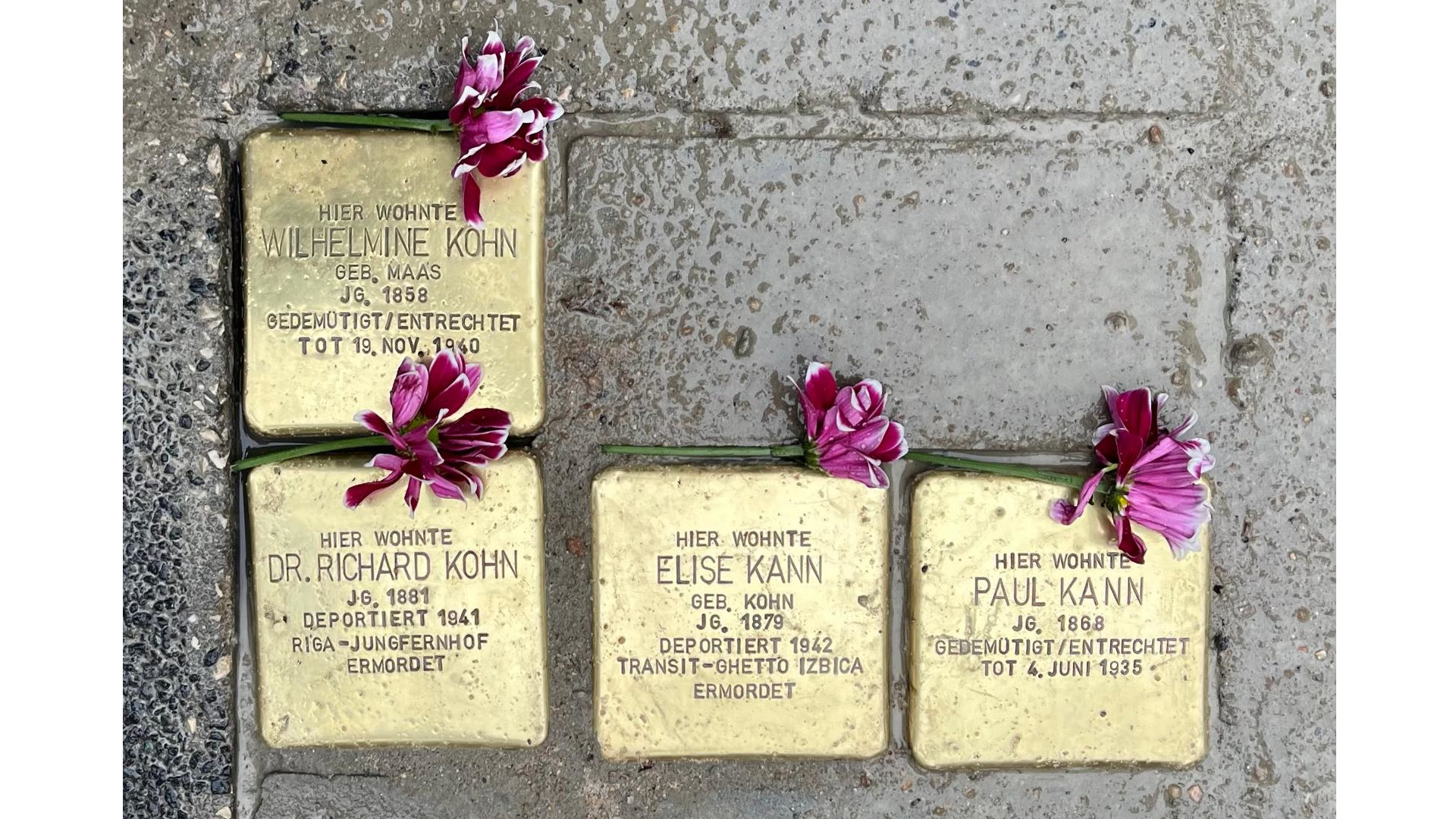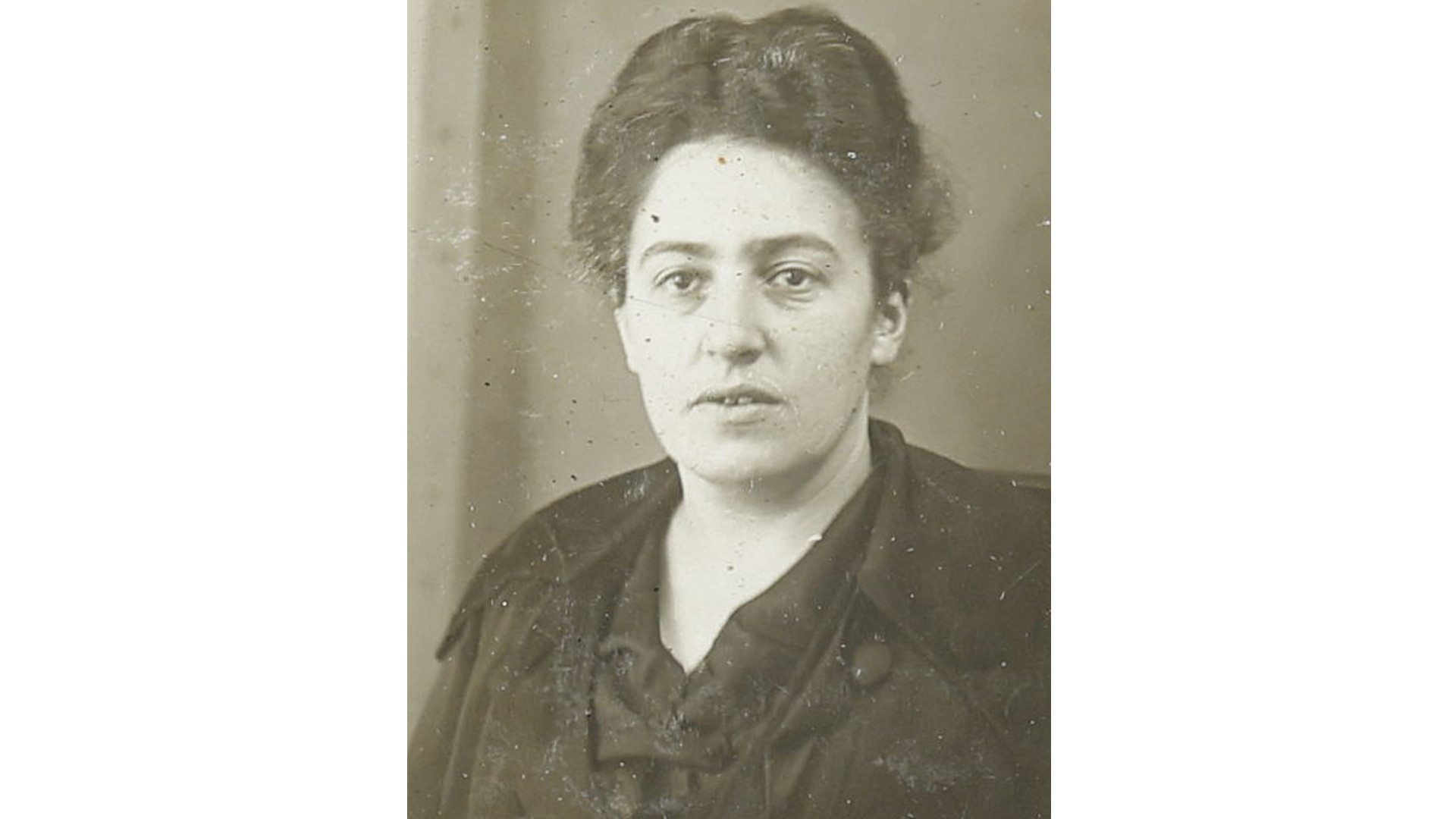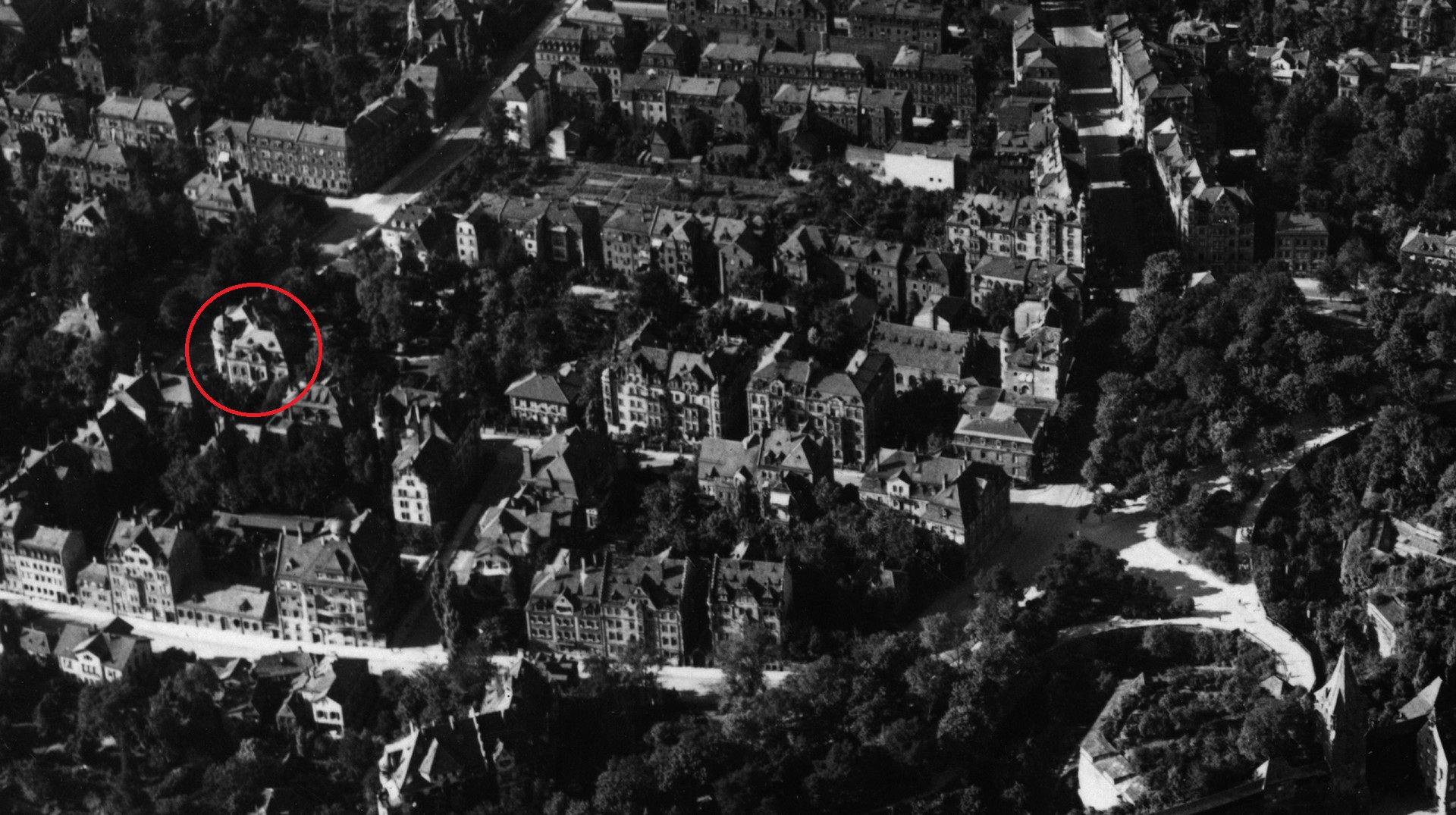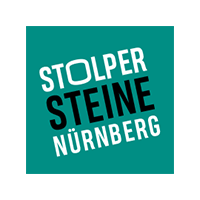| Location of stone: Campestrasse 10 | District: St. Johannis |
| Sponsor: Jeffrey Metzger | Laying of stone: 24 October 2025 |
Biography
On 24 October 2025, four stumbling stones were laid in front of the former Kohn villa for members of the Kohn family. Their descendant Jeffrey Metzger was sponsor. Wilhelmine died in 1940 disenfranchised and dispossessed; her son-in-law Paul Kann in 1935. Her son Richard was murdered in Riga-Jungfernhof and her daughter Elise in the Izbica Ghetto.
The history of the Kohn family in Nuremberg begins with Joseph Kohn, who in 1850 became the first Jewish citizen of Nuremberg in modern times. His brother Anton followed a few months later. Both came from Markt Erlbach. In 1872, Anton founded the Bankhaus Anton Kohn, which was the largest private bank in Bavaria around the turn of the 20th century.
Anton’s son, Emil Kohn, was also born in Markt Erlbach on 30 October 1845, as one of eight children.
Emil was a banker and managed, together with his brother Georg Friedrich, the Bankhaus Anton Kohn after the death of his father. From 1887 to 1896, Emil was a member of the Gemeindekollegium (city council), was active in the city’s trade association and was appointed as a commercial judge at the regional court for commercial matters of the Nuremberg district court.
On 18 November 1876, he married Wilhelmine Maas, born on 17 October 1858 in Grünstadt, Rhineland-Palatinate. Her father was Dr. med. Markus Maas.
Emil and Wilhelmine had four children: Martin, born on 26 October 1877, Elise Sophie, born on 14 September 1879, Richard, born on 11 February 1881, and Johanna Karolina, born on 2 February 1882.
Anton Kohn had lived with his family in the company headquarters at Königstrasse 26. Emil purchased property in 1897 at Campestrasse 10, where he had a family villa built. The family moved there in 1899. Emil died seven years later on 5 March 1906.
His son, Dr. Richard Kohn, studied law, received a doctorate and was admitted to the bar, but never practiced this profession. Shortly after the turn of the century, he joined the Anton Kohn company. He managed the bank together with his brother Martin. Just as his father, Richard was a member of the Gemeindekollegium (city council) from 1914 to 1919. From 1919 to 1924, he was a member of the newly formed city council as a member of the German Democratic Party (DDP). From 1912 he was a member of the city’s trade association and from 1922 market supervisor (Marktvorsteher). In 1923 he was awarded the title commercial councilor (Kommerzienrat).
Richard’s sister Elise also lived in Campestrasse 10. She was known for her artistic talents.
On 3 July 1898, she married Paul Kann. He was born on 2 October 1868 in Nuremberg as the son of Josef Kann and Elise, née Erlbacher. Paul was an engineer and deputy president of the Regional Post Office Administration Nuremberg. At that time he was most likely the highest-ranking Jewish civil servant in Bavaria.
The Kanns had two daughters: Charlotte Babette Mathilde, born on 2 April 1899, and Helene Antonia Josefina, born on 6 September 1901. Paul died on 4 June 1935.
From 1933, the National Socialists made the business activities of the Bankhaus Kohn increasingly difficult. In the night of the November Pogrom 1938, the Kohn’s villa was ransacked. In the same year, there was a forced liquidation of the Bankhaus Kohn and coerced sale of the properties at Königstrasse 26 and Campestrasse 10. The National Socialists called it “Aryanization”. To try to force Richard Kohn into submission, he was imprisoned for several months with the allegation of “race defilement”. The purchase price for the company and property was paid into blocked accounts, to which the former owners had no access. This made the funds for emigration out of reach.
Wilhelmine moved in the middle of November 1938 into the Jewish home for the aged in Johannisstrasse 17 for six weeks and then returned to Campestrasse. She died there on 19 November 1940.
Dr. Richard Kohn was deported on 29 November 1941 to Riga-Jungfernhof, where he was most likely murdered on 26 March 1942 in a mass shooting.
Elise was deported on 24 March 1942 to the Izbica Ghetto and murdered there.
- Nuremberg City Archives, C 21/X Nr. 1 registration card.
- Nuremberg City Archives (ed.), Gedenkbuch für die Nuremberger Opfer der Schoa (Quellen zur Geschichte und Kultur der Stadt Nuremberg, vol. 29), Nuremberg 1998, p. 160, 175.
- Janetzko, Maren, Haben Sie nicht das Bankhaus Kohn gesehen? Ein jüdisches Familienschicksal in Nuremberg 1850 – 1950, Nuremberg 1998.





![[Translate to English:] [Translate to English:]](/fileadmin/Stolpersteine/Portraits/Dirnbach_Else_und_Hermann.jpg)




